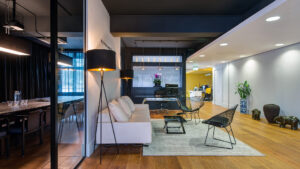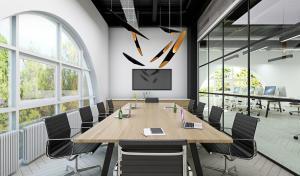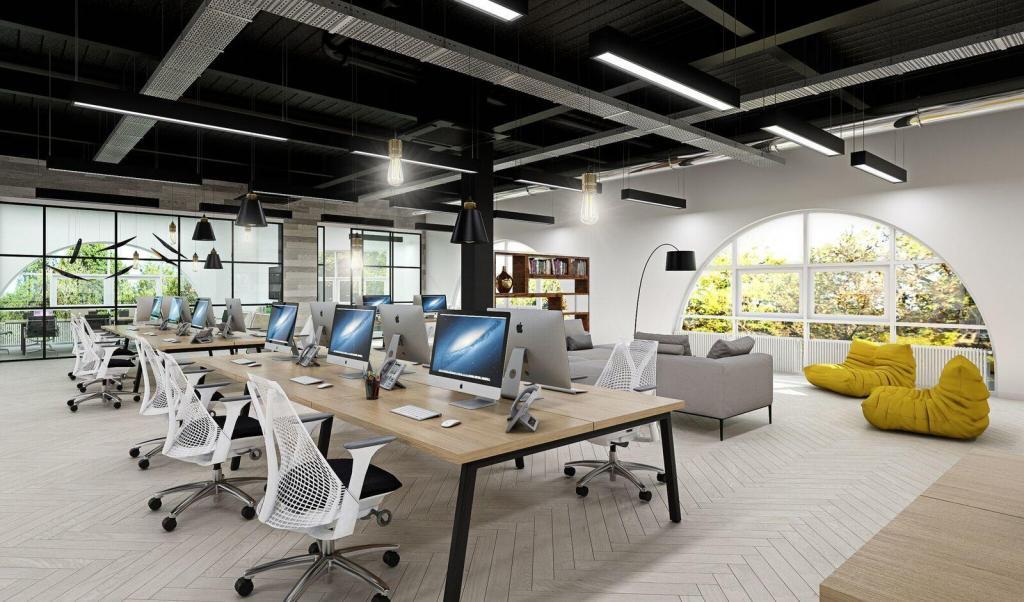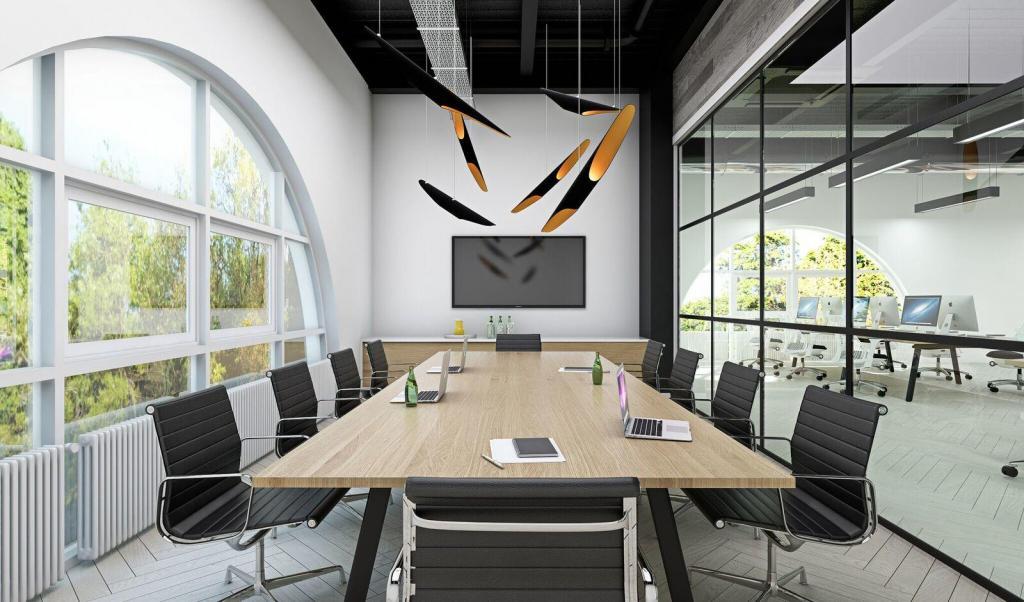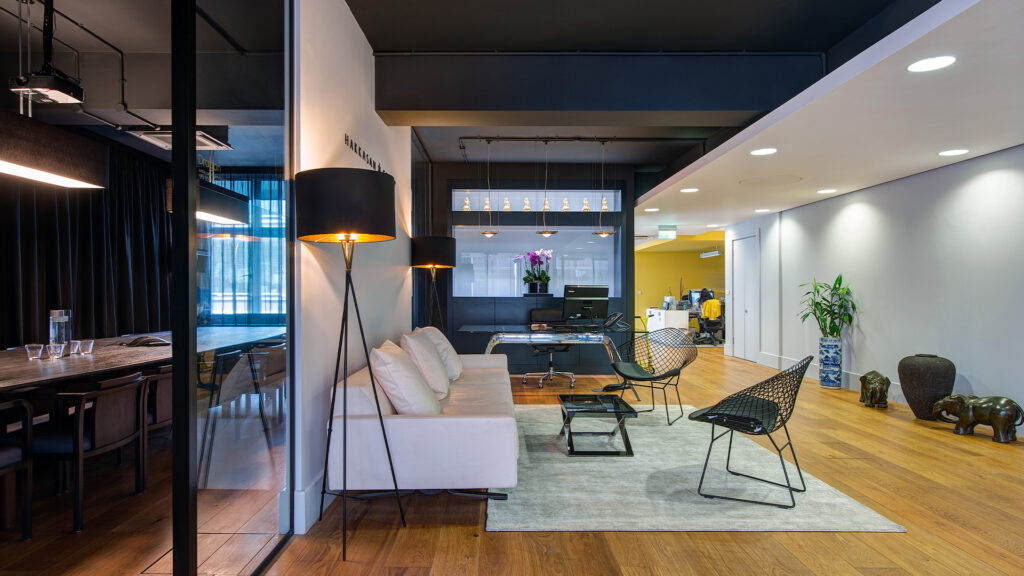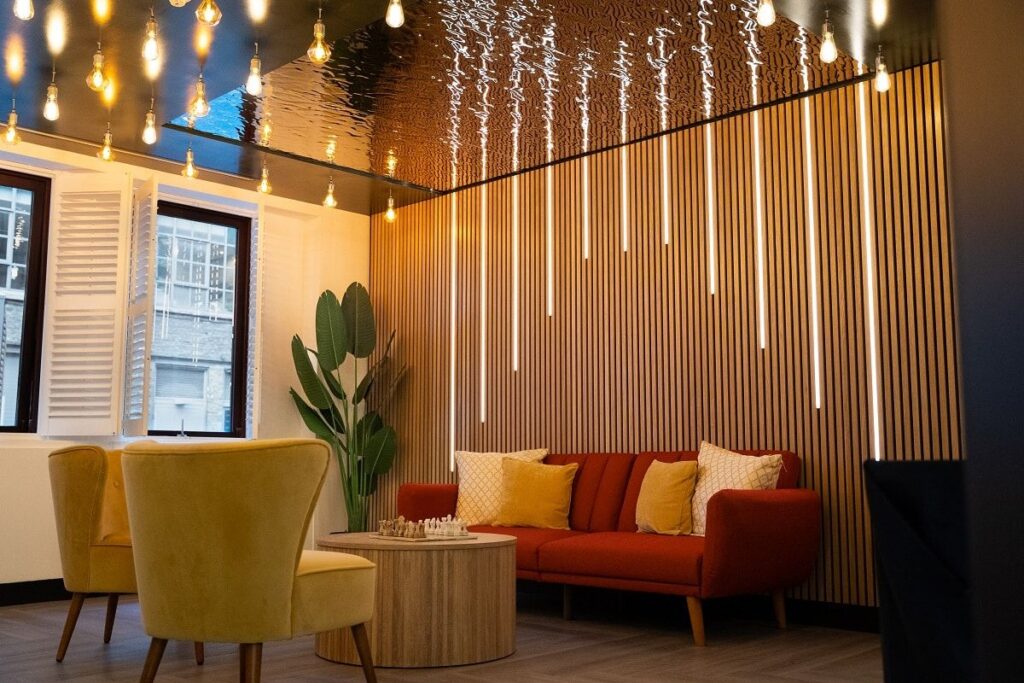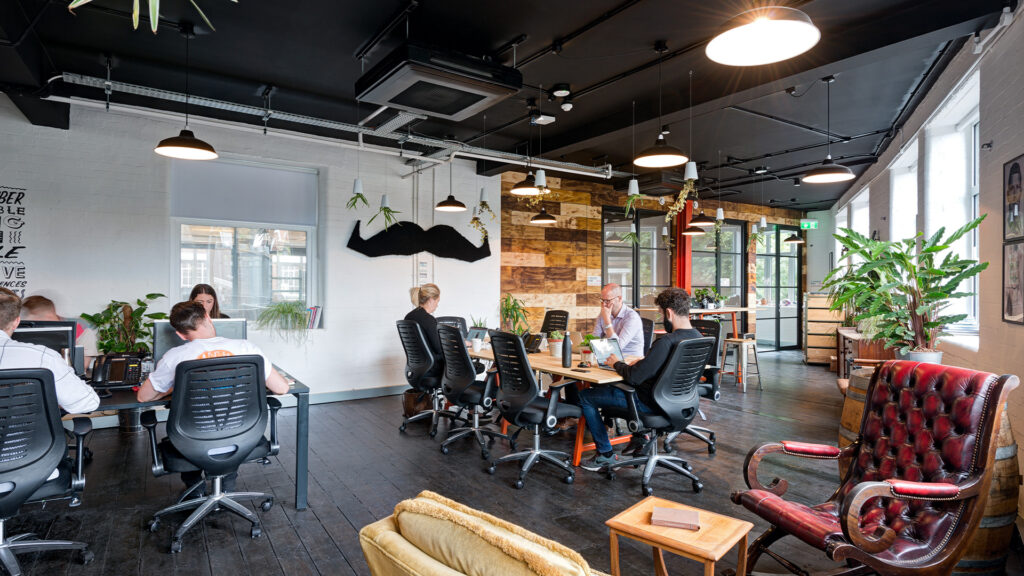Open-plan offices have their perks. They’re bright, collaborative, and flexible – all great for culture, creativity, and that buzz of energy modern businesses thrive on. But they come with a not-so-little challenge: noise.
From phone calls and video meetings to spontaneous brainstorms and the endless hum of printers and keyboards, noise in an open office can quickly become distracting. Productivity drops, stress rises, and the once-dynamic workspace starts to feel more like a call centre.
The solution? Soundproofing. But not in the old-school, shut-everything-away sense. Modern soundproofing is smart, stylish and unobtrusive – and when it’s done well, you’ll barely notice it’s there.
Here’s how to tackle sound in an open-plan space without compromising on design, layout or culture.
Step 1: Understand the Types of Noise
Before jumping into solutions, it’s important to understand the types of noise you’re dealing with:
- Airborne noise: Voices, phone calls, music – anything that travels through the air.
- Impact noise: Footsteps on hard floors, chairs scraping, doors slamming.
- Reverberation: Sound that bounces around due to hard surfaces and poor acoustics.
The best soundproofing strategies target these sources without turning your vibrant workplace into a series of silent cubicles.
Step 2: Start With Acoustic Zoning
Zoning is key. An open plan doesn’t have to mean everything is open. Thoughtful layout planning lets you subtly separate noisy zones from quiet ones.
- Create quiet zones: Think library vibes – focused work, low noise, minimal interruptions. Place these away from communal areas and thoroughfares.
- Designate collaboration zones: Near the kitchen, breakout spaces or meeting areas. These naturally absorb conversation and movement.
- Strategically place desks: Avoid lining up workstations too close to noisy areas like printers, kitchenettes or entranceways.
Good zoning is the foundation. It allows soundproofing to be layered in effectively.
Step 3: Use Acoustic Panels & Wall Treatments
One of the most effective tools in the soundproofing toolbox is the acoustic panel. These come in various forms – wall-mounted, freestanding, ceiling-hung – and can be as much about aesthetics as they are about absorption.
- Wall panels: Great for soaking up noise and adding texture or colour to blank walls.
- Ceiling baffles or clouds: Ideal for high-ceilinged spaces. They stop sound from ricocheting around the room.
- Acoustic wallpaper or fabric: A softer finish that still packs a punch in the noise-reduction department.
These treatments absorb mid- to high-frequency sounds (like speech), helping to reduce echo and stop noise from carrying.
Read more: How To Improve Office Acoustics.
Step 4: Rethink Your Flooring
Hard floors might look sleek, but they do nothing to help with acoustics. Sound bounces off them freely, and impact noise from footsteps or wheely chairs becomes a daily nuisance.
- Carpet tiles: These are a soundproofing win. Durable, easy to maintain and great at deadening impact noise.
- Acoustic underlay: Installed beneath flooring, it adds a layer of insulation that stops sound from travelling.
- Rugs: For a more informal fix, adding large rugs to key areas can help muffle sound – especially under seating zones or meeting pods.
Even small flooring changes can have a big acoustic impact.
Step 5: Bring in Soft Furnishings
Softness = silence. The more plush materials you introduce into an open space, the more noise gets absorbed.
- Upholstered seating: Opt for fabric over leather. It deadens sound and feels more welcoming.
- Curtains or fabric partitions: These can separate areas and act as sound barriers without building walls.
- Acoustic desk dividers: Not only do they offer a bit of privacy, but they also help block sound between workstations.
Mixing in these elements won’t just improve acoustics – they’ll make your space look and feel more comfortable too.
Step 6: Install Sound-Absorbing Furniture
Modern office furniture is doing more than just looking pretty. Many manufacturers now offer acoustic furniture designed specifically for open-plan spaces.
- Acoustic pods or booths: Great for calls or focused solo work. They shield sound in both directions.
- High-back sofas: These wrap around the user, creating a quieter bubble within the open space.
- Modular partitions: Reconfigurable panels that double up as acoustic barriers and space dividers.
These solutions are particularly useful in agile working environments where flexibility is essential.
Step 7: Control the Noise Sources
Soundproofing isn’t just about absorbing noise – it’s also about managing where and how it’s created.
- Encourage headphones for calls or music: Prevents personal noise from becoming shared noise.
- Create rules around call zones: Give people designated areas for long calls or virtual meetings.
- Place noisy tech in separate areas: Printers, shredders and other mechanical beasts belong in separate rooms or enclosed nooks.
- Install soft-close mechanisms: On doors, drawers and kitchen units to reduce bangs and crashes.
By addressing the source, you can reduce the amount of sound that needs absorbing in the first place.
Step 8: Don’t Forget the Ceiling
In open offices with high ceilings, sound can bounce around like a squash ball. Installing acoustic ceiling panels – or “clouds” – can dramatically improve clarity and cut down on echo.
- Suspended acoustic panels: These absorb sound above busy areas like desks or meeting tables.
- Spray-on acoustic finishes: Less visible but effective, these materials reduce reverberation across the entire ceiling surface.
This is particularly useful in industrial conversions or exposed-ceiling spaces.
Step 9: Consider White Noise Systems
It may sound counterintuitive, but adding more sound – in the form of ambient background noise – can actually improve an office’s acoustic profile.
White noise or sound masking systems emit a low-level, consistent background sound that masks disruptive noises like conversations or footsteps. It’s subtle, but incredibly effective at boosting focus and privacy.
Used properly, these systems can level out the sound landscape in a busy space.
Step 10: Think Beyond Physical Solutions
Finally, remember that culture and etiquette play a role, too. No matter how well you soundproof, noise will still happen. Encourage behaviours that support the environment:
- Keep music personal (headphones only).
- Use chat platforms or emails instead of shouting across the office.
- Book a booth or meeting room for longer calls or group chats.
- Keep ‘quiet hours’ or focus blocks in the diary if needed.
Creating a respectful, acoustically aware culture is just as important as the physical fixes.
Final Thoughts
Open-plan offices aren’t going anywhere – and nor should they. But without smart soundproofing, even the most stylish space can become a productivity black hole. The key is to layer solutions: plan your zones, soften your surfaces, manage your noise sources, and invest in acoustic features that work as hard as your team does.
At CCWS, we believe great office design is about more than desks and paint colours. It’s about creating a space that supports the way your people work – and soundproofing is a big part of that. When your team can hear themselves think, they can do their best work. And that’s what we’re here to build.
Frequently Asked Questions
Do I need to fully enclose spaces to reduce noise in an open office?
Not necessarily. Smart use of acoustic materials, zoning and furnishings can dramatically reduce noise without needing to build full walls.
Can I soundproof an existing office, or does it need a full refit?
Absolutely. Many soundproofing solutions – like acoustic panels, rugs, or desk dividers – can be retrofitted with minimal disruption.
Is soundproofing expensive?
It doesn’t have to be. There are budget-friendly options like carpets, curtains and fabric panels that make a big difference. It’s all about layering solutions.
Will soundproofing make the space too quiet or dull?
No. The aim isn’t silence – it’s controlled sound. A healthy hum of activity is great; it’s about removing the distracting spikes in noise.
How do I know if my office has an acoustic problem?
If your team is constantly wearing headphones, struggling to hear on calls, or booking meeting rooms just for focus, that’s a red flag. A simple acoustic audit can help.


